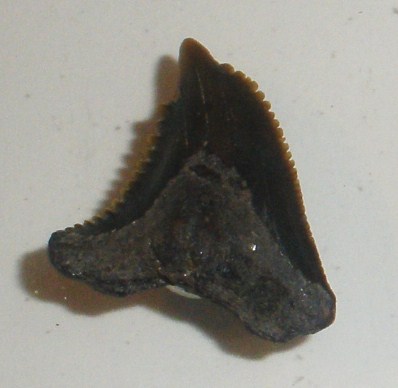Hemipristis serra on:
[Wikipedia]
[Google]
[Amazon]
 ''Hemipristis serra'' is an extinct species of weasel shark which existed during the
''Hemipristis serra'' is an extinct species of weasel shark which existed during the
 ''Hemipristis serra'' is an extinct species of weasel shark which existed during the
''Hemipristis serra'' is an extinct species of weasel shark which existed during the Miocene
The Miocene ( ) is the first geological epoch of the Neogene Period and extends from about (Ma). The Miocene was named by Scottish geologist Charles Lyell; the name comes from the Greek words (', "less") and (', "new") and means "less recen ...
epoch. It was described by Louis Agassiz
Jean Louis Rodolphe Agassiz ( ; ) FRS (For) FRSE (May 28, 1807 – December 14, 1873) was a Swiss-born American biologist and geologist who is recognized as a scholar of Earth's natural history.
Spending his early life in Switzerland, he rec ...
in 1843. While today's snaggletooth shark is not very large or dangerous, ''Hemipristis serra'', which lived in the Atlantic Ocean during the Oligocene and Miocene, was considerably larger than its modern-day relative and had much larger teeth. Its total length is estimated to be . Marks made by the teeth of ''H. serra'' are often found on the bones of the manatee ''Metaxytherium
''Metaxytherium'' is an extinct genus of dugong that lived from the Oligocene until the end of the Pliocene. Fossil remains have been found in Africa, Europe, North America and South America. Generally marine seagrass specialists, they inhabite ...
'' leading some scientists to hypothesize that ''H. serra'' specialized in preying on these sirenian
The Sirenia (), commonly referred to as sea-cows or sirenians, are an order of fully aquatic, herbivorous mammals that inhabit swamps, rivers, estuaries, marine wetlands, and coastal marine waters. The Sirenia currently comprise two distinct f ...
s. In the Gatun Formation of Panama, ''H. serra'' was contemporary with pups of the large lamniform shark ''Otodus megalodon
Megalodon (''Otodus megalodon''), meaning "big tooth", is an extinct species of mackerel shark that lived approximately 23 to 3.6 million years ago (Mya), from the Early Miocene to the Pliocene epochs. It was formerly thought to be a member ...
'', and both it and the great hammerhead
The great hammerhead (''Sphyrna mokarran'') or great hammerhead shark is the largest species of hammerhead shark, belonging to the family Sphyrnidae, attaining an average length of and reaching a maximum length of . It is found in tropical and w ...
are theorized to have preyed on the pups of this larger shark due to their presence within the formation.
The unusual teeth of ''Hemipristis serra'' are highly prized by collectors because they are often found in sediments in Southern Florida that yield extremely colorful fossil shark teeth. Their outstandingly large serrations make it a favorite and unique collectible fossil. Little else is known about the general appearance of ''H. serra'', as there are no known fossils preserving its cartilaginous skeleton at present.
References
Hemipristis Miocene sharks Miocene fish of North America Fossil taxa described in 1843 {{Shark-stub